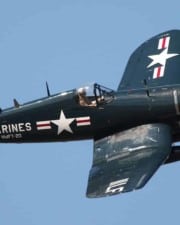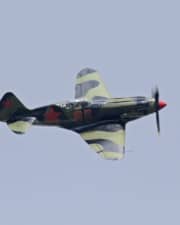The Second World War was undoubtedly the most significant military event of the last century. It was fought on all fronts, but the most prominent role was played by fighter airplanes. The era saw fast-paced innovation in aviation technology and gave birth to some of the best aircraft and aerial combat feats that are remembered today.
During this time, the world saw fast-paced innovation in combat aviation. From bombers to fighter jets to photo-reconnaissance missions, these aircraft played a pivotal role in the war and are still remembered for their terror in the skies and mayhem on the battlefields.
In the skies above, numerous aircraft stood out for their sheer speed and dominance. These planes are known as some of the best in aviation history. Pilots worldwide still study them for their capabilities and successes in the war.
The designs of World War II aircraft have been a massive influence on aviation even to this day, and few of these planes still fly in airshows and demonstrations across the globe. Some of the airplanes have been commemorated in artwork and photographs and honored with the names of the pilots who flew them during the war.
In this article, we’ll take a look at some of the best and most famous WWII aircraft. These birds of prey played a key role in changing the course of history, and their achievements on the battlefield are undeniable. Let’s dig right in!
1. Supermarine Spitfire (UK)
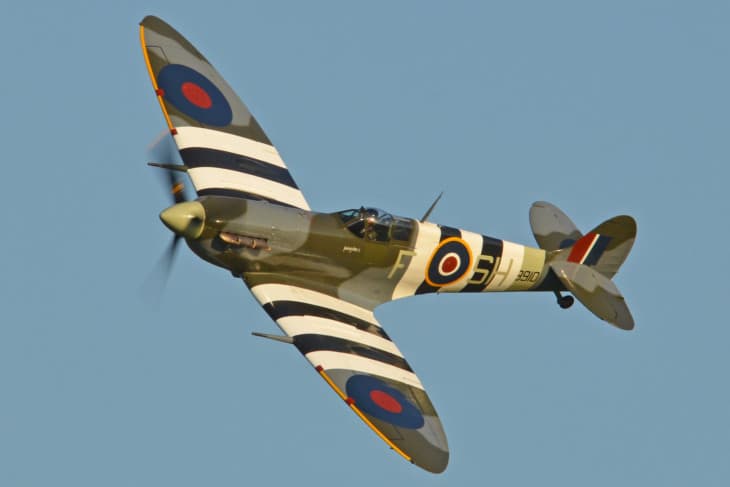
The Supermarine Spitfire is perhaps the best-known British airplane of World War II and was designed as an interceptor aircraft. The development and design of the Spitfire was a pioneering moment in aviation. It helped influence many other British planes developed during and after the war.
The Spitfire is notable for its sleek, slender body, which allowed a maximum speed of 580 km/h. It’s also famous because its design and aerodynamic capabilities allowed it to sustain damage and remain in the air. This allowed pilots to withstand a beating during combat and still keep on fighting, much to the enemy’s frustration.
Developed in 1938, the Spitfire was kept under wraps during the start of World War II, with the Hawker Hurricane doing most of Britain’s aerial bidding. Soon, it became clear that the Hurricane was no match for German air superiority, forcing them to try the Spitfire. It did not disappoint!
In addition to its design, the power of the Spitfire was unmatched during WWII. It had 8 machine guns mounted to deliver a rain of fire to bombers and ground targets alike. It was among the only airplanes that could seriously challenge the aerial superiority of the German juggernaut, the Messerschmitt Bf 109.
Related: Best British Fighter Planes of WWII, British Bombers of WWII
2. Messerschmitt Bf 109 (Germany)
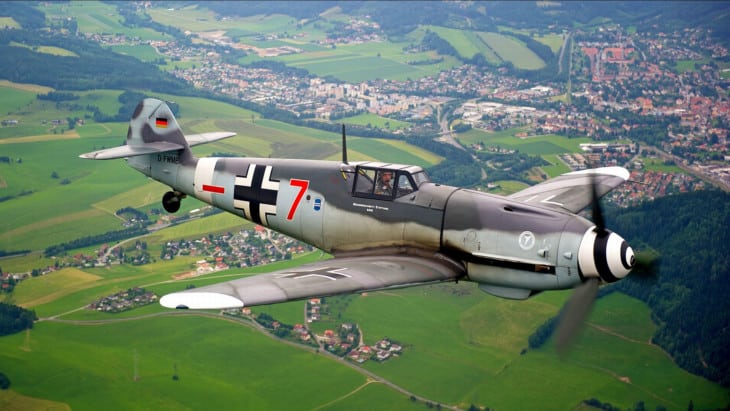
The Messerschmitt Bf 109 served as the backbone of the German Luftwaffe during the war.
It was a highly advanced airplane and the most massively produced German aircraft ever. It was the aircraft in which all-time legendary pilot Erich Hartmann downed an unbelievable 352 enemies, and it topped the WW2 charts as the deadliest airplane.
The Bf 109 was used in numerous roles, including defense, counterattack, offense, and reconnaissance missions. The plane was designed with numerous features that gave it an edge in the air, including its speed (which could reach up to 640 kph), firepower (machine guns, rockets, and bombs), and durability.
The Bf 109 terrorized the skies for many years and was able to hold its own against many Allied aircraft. It was also used by other axis countries in several significant battles, including the invasion of Poland, Battle of Crete, Operation Barbarossa, and several others.
Related: Best German Fighter Planes of WWII, German Bombers of WWII
3. North American P-51 Mustang (USA)
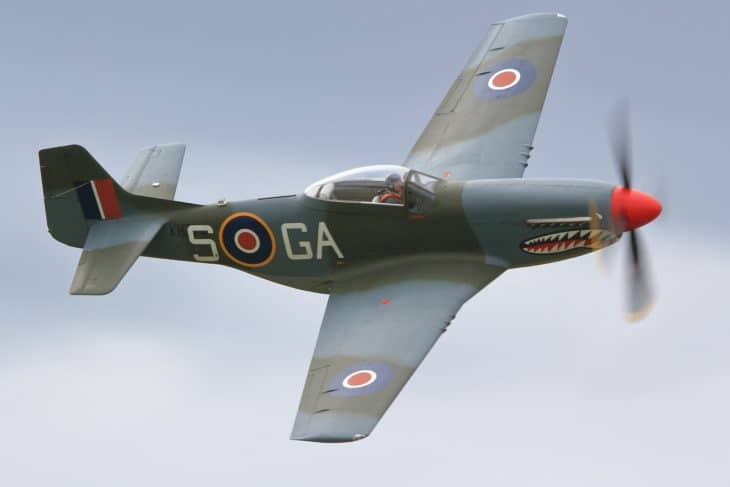
The P-51 Mustang was a long-range fighter aircraft. First used by the RAF and later the USAAF, the Mustang gave the allies the upper hand in aerial combat during WWII. It had numerous notable features, most notably its extended range, speed, and ability to fly at high altitudes.
The Mustang was first used in combat by the Royal Air Force (RAF) in 1942 and quickly changed the war’s course. It could go toe to toe against the Luftwaffe’s aerial phenoms: the Bf 109 and FW 190. The P-51 was equipped with 6 machine guns and could carry 230 kgs of bombs.
The American pilots who flew the P-51 during WWII often described it as one of the best fighter planes they’d ever flown. It was also the aircraft famously used by Tuskegee Airmen.
It had speed, power, and ease-of-use on its side. The P-51 changed the war and gave a massive boost to the previously outmatched allied air force.
Related: American Fighter Planes of WWII, American Bombers of WWII
4. Mitsubishi A6M Zero (Japan)
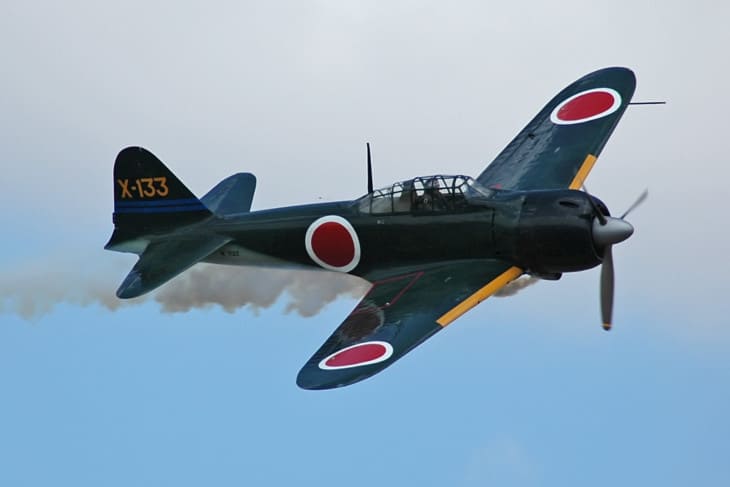
The Mitsubishi A6M Zero fighter aircraft was a formidable fighter aircraft during WWII and held the title of the best carrier-based fighter in the world for several years. The Zero spearheaded air strike missions all over China and was famously used in the bombing of Pearl Harbor.
The plane’s design was revolutionary; It had a light weight, had low fuel consumption, and could reach high speeds (about 533 km/h). The plane was also highly maneuverable, giving Japanese pilots several advantages in combat with Allied planes.
The A6M Zero was used in various roles, including bomber escort, reconnaissance, and long-range missions. As allied technology advanced and the Zero became obsolete, the Japanese resorted to using it as a kamikaze airplane—a desperate move and last service to the falling Japanese empire.
Related: Japanese Fighter Planes of WWII, Japanese Bombers of WWII
5. Boeing B-29 Superfortress (USA)
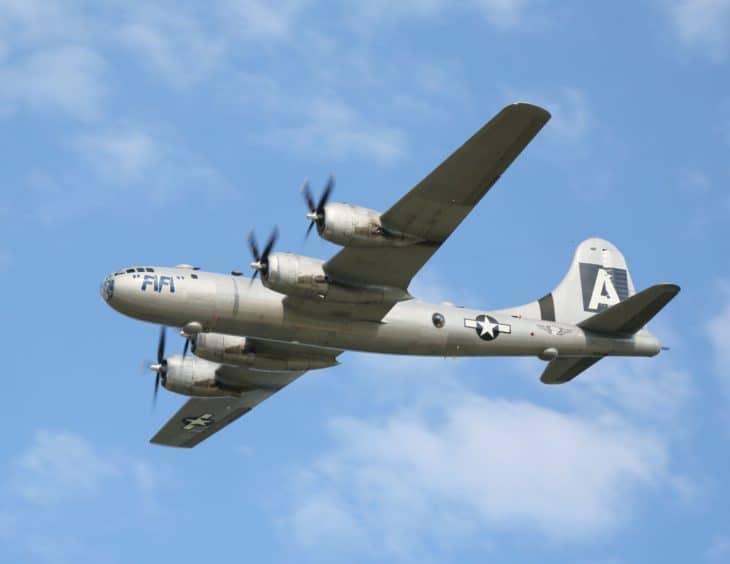
Several airplanes on our list changed the war, but none had an impact more pronounced than the Boeing B-29 Superfortress: the plane that literally ended the war.
It was a strategic heavy bomber used by the U.S. Army Air Corps and was one of the biggest and most advanced bombers of its time.
The B-29 had numerous futuristic features, including a pressurized cabin, a central fire control system, 12 50-caliber machine guns, and four 2200hp engines. It could also reach high altitudes with a large payload. With thick armor protecting its vast airframe, the plane had every right to be called “the Superfortress.”
The plane flew higher than any other aircraft at that time and could carry heavy bombs over long distances. The B-29 was also responsible for dropping the atomic bombs on Hiroshima and Nagasaki, which ultimately brought Japan to its knees and ended the war.
6. De Havilland DH 98 Mosquito (U.K.)
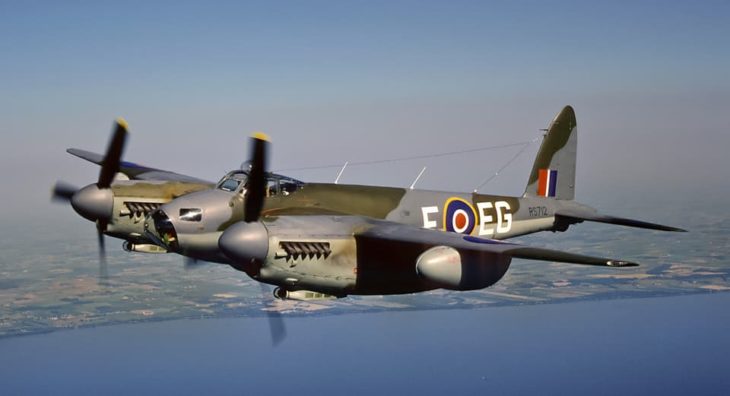
De Havilland’s design of the Mosquito came about when Britain needed a cheap, easy to build, and capable bomber. The plane was made almost entirely of wood and glue, which sped up the manufacturing process and also made it the fastest airplane of its time.
Many allied and enemy airplane manufacturers sneered at the idea when the Mosquito was conceptualized, with many calling it a large model airplane. The Mosquito first flew in 1941 and impressed the RAF enough to induct it in its ranks. It served 33 roles during its service, including night-fighter, bomber, and photo-reconnaissance aircraft.
The Mosquito was a highly successful plane, serving the RAF in various roles. The plane’s high speed of 668 km/h and agility made it a difficult target for the enemy to shoot down. Not bad for a life-sized toy airplane!
7. Focke-Wulf FW-190 (Germany)
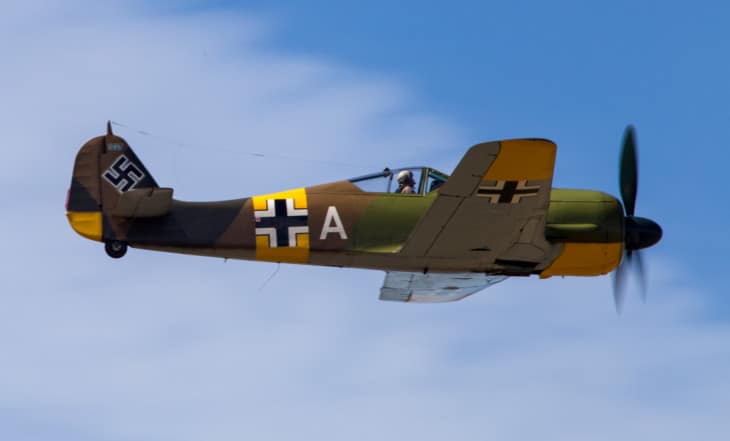
If the allies had the P-51 Mustang and the Spitfire, the Germans had “the butcher bird” FW-190. The Focke-Wulf FW-190 was a German fighter plane that saw extensive use during late WWII. It was designed to fight alongside the Bf 109, but it soon outshone its older comrade in all aspects.
The airplane was designed with simplicity, durability, and ease of use in mind. It was powered by a highly advanced BMW 801 radial engine (an unconventional choice at the time) and had a top speed of 652 km/h. Four MG 151/20 cannons gave it formidable firepower, and two MG 131 machine guns provided added damage.
The FW-190 became one of the most successful German fighters of the war, and it was responsible for shooting down thousands of highly advanced Allied aircraft. However, its late arrival and low production numbers kept it from unleashing its full wrath on the allied forces.
8. Dewoitine D-520 (France)
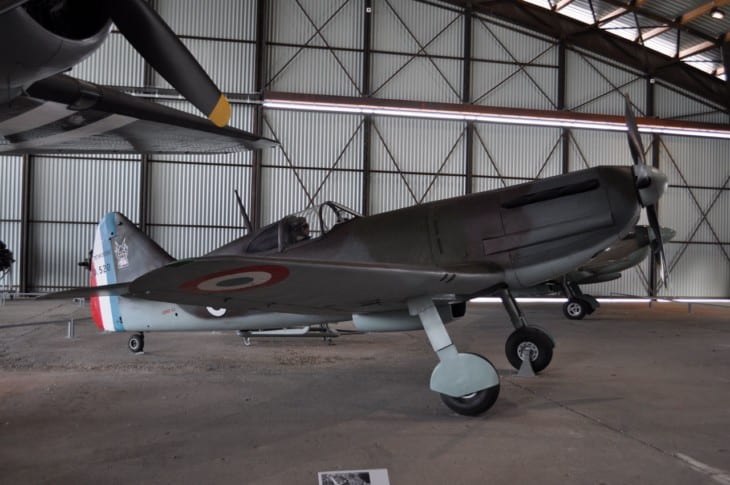
The Dewoitine D-520 was a fighter aircraft the French air force used during WWII. The plane was designed in response to a government request for a fast, modern fighter that could be built in little time. It performed well against early adversaries such as the Italian CR.42 and German Bf 109.
The D-520 was powered by a single 1000 hp Hispano-Suiza engine and had little shielding. It was armed with a 20mm cannon and four 7.5 mm machine guns. This arsenal was modest, but it did manage to give even the German Bf 109’s a headache. The Italian air force was utterly outmatched by the D-520.
The small numbers of D-520’s that were produced (only 246 when WW2 started) did not make a massive impact on the course of the war. However, the plane did remarkably well for the inexperienced French air force until their country surrendered in 1940. It later served as a training aircraft to the Luftwaffe.
Related Posts



